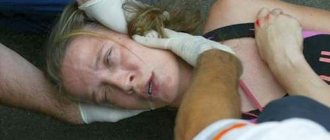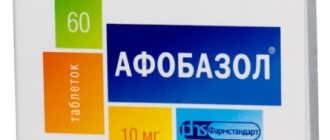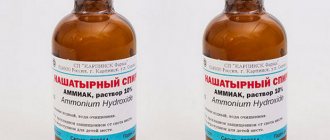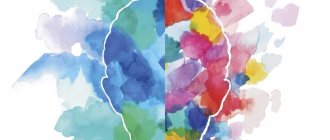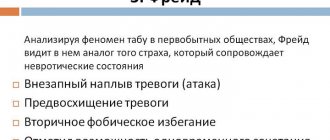A person’s desire to escape from the daily routine forced him to discover drugs - chemical compounds that distort the perception of reality, provoking various visions and sounds that actually do not exist. Hallucinogenic drugs sold in modern pharmacies are very popular among teenagers . Such drugs contain substances that can put the patient in a state of euphoria and cause hallucinations. However, these drugs are by no means harmless and can be highly addictive.
Popular pharmaceutical drugs
Every year the number of citizens who use chemicals that are prohibited for circulation increases. This is due to the fact that the availability of their acquisition has increased significantly.
According to statistics, it is not difficult to purchase drugs at a pharmacy.
Since you don’t even need to have a prescription from a doctor for this. In fact, drugs were originally intended to treat various pathologies. But over time, they began to be used as an intoxicating agent.
When a person uses medications incorrectly, they pose a real threat to health and life. There is a list of the most popular narcotic tablets that are purchased at the pharmacy kiosk - these are Tramadol, Tropicamide, Terpinkod, Nurofen plus, Lyrica.
The list of medications is quite wide, but among addicts, the most popular medications are those that contain codeine. This is an artificially derived element that is an excellent substitute for opium.
Legal drug dealer
While the state is fighting the spread of conventional drugs, pharmacies are becoming legal drug dealers. Officially, all medications with narcotic compounds are divided into 3 control groups:
- Group 1 drugs are available only after a mandatory call to a medical institution and verification of the authenticity of the prescription.
- Group 2 drugs are issued only as prescribed by a doctor, but without additional checks.
- Group 3 drugs are available without a prescription.
This is how this system is supposed to work. But in fact, many pharmacies violate control rules and dispense psychotropic drugs without the necessary permission. There is only one reason - drug addiction brings big profits to the pharmacy business. For the opportunity to legally purchase drugs, addicts are willing to pay inflated prices, and thanks to the availability of these drugs, the number of pharmacy drug addicts is only growing.
Tropicamide
This drug is available in the form of drops and is used by ophthalmologists. The drug is used to diagnose the visual system. It is also used in the treatment of inflammation. Drug addicts take Tropicamide because in large quantities the drug leads to euphoria.
In significant doses it causes auditory and visual hallucinations.
Some people use it in its pure form, drink it, or inject it into their veins. The drug is also often mixed with opiates. The danger of the medicine is that in just one month a person becomes addicted.
An overdose of this drug is extremely serious - it can lead to fainting, mental disorders, and the development of other pathologies.
List of drugs
To find out what pills drug addicts take, you need to familiarize yourself with the Lists of Prohibited Substances approved by Decree of the Government of the Russian Federation dated October 1, 2012 No. 1002 (as amended on August 9, 2019). A “pharmacy high” is only possible if a person is thoroughly familiar with the pharmacological features. Otherwise, he will not be able to choose the dose and will only get side effects.
What pills do drug addicts use?
Medicines that are useful in a therapeutic sense and contain narcotic substances become poison in the hands of inept users. Many of them cause persistent physical and mental dependence. And, unfortunately, dubious pharmacies do not hesitate to sell such medications even without a doctor’s prescription.
The prohibited drugs that drug addicts use are List A (for the most part). It was approved by orders of the Ministry of Health until 2010. Its analogue is the Lists, which are an annex to the UN Single Convention on Narcotic Drugs.
Nurofen+ and Terpincode
The composition of the drugs is similar, their difference lies only in cost. At first, drugs were used in the form of the Terpinkod tablet, but the pharmacological company increased the price, because of this, addicts had to look for a cheaper analogue, which became Nurofen Plus.
It has been discussed for a long time that these drugs should only be sold at the pharmacy kiosk with a prescription. To achieve euphoria, you need to take from 2 to 5 packs.
The worst thing is that addiction occurs almost immediately, since the medicine has a psychotropic effect.
Impact of psychedelics
There are many medicines that have psychedelic properties. The popularity of medicines is explained by the fact that they contain hemp. The most common are diethylamide, psilocybin, and mescaline.
These are accessible types of drugs that allow a person to escape from the real world. Long-term use of the drug leads to serious consequences, the patient ceases to understand where he is, and also does not distinguish an imaginary life from reality.
Lyrica and tramadol
Lyrica is a relatively new drug. The substances included in the composition have a sedative and analgesic effect, since its purpose is to prevent seizures.
The medication has proven itself well and copes with pathologies at a high level, but the disadvantage is a wide list of side effects. The properties of the drug are compared to smoking marijuana and drinking strong drinks.
When Tramadol appeared on the shelves, drug addicts began to actively use it, since this analgesic has a fairly powerful effect. This substance is included in a large number of drugs, but in its pure form has not been sold for several years, as it is highly addictive.
It is worth noting that drugs containing it are not dispensed without a doctor’s prescription.
At first, when taking Tramadol, a person feels euphoria, he wants to help everyone, physical endurance increases, and his emotional background improves.
However, these feelings pass quite quickly, after a couple of days of taking the medication, drug addiction develops, a fear of being alone also arises, a phobia of persecution and visual hallucinations appear.
In the course of research, it was found that after 40-60 days of regular use of the medicine, addiction appears, which it is no longer possible to fight on your own.
Consequences of using pharmaceutical drugs
The consequences of drug use can be very diverse, it all depends on the type of medication. For example, people who take tramadol face problems such as loss of appetite, dementia, and panic attacks. The nervous system suffers, the production of enzymes that connect the central nervous system with internal organs slows down, and this leads to seizures.
In addition, problems arise with the heart muscle, its rhythm slows down greatly, and difficulty breathing occurs. In severe addiction, a person suffers from depression, which leads to suicide.
When a drug addict takes tropicamide for a long time, in addition to mental disorders, he acquires diseases of the renal and hepatic systems. These are hepatitis, cirrhosis, problems with urination.
Also, purulent inflammation appears in the places where the injections were made. The infection spreads throughout all internal tissues, leading to serious health complications.
According to statistics, the mortality rate from pharmaceutical drugs is about 40 percent, and the figure is growing every year.
Since there are a lot of drugs containing intoxicating substances. Almost all of these medicines are available for purchase, and the pricing policy of the pharmaceutical company allows you to choose a medicine at an affordable cost.
Drug rehabilitation
Drug addiction is a disease that is difficult to cure. It is worth noting that this pathology cannot be dealt with at home. Because when a person gives up a chemical, withdrawal symptoms begin.
Also, the sensations cannot be experienced, because not only psychological but also physical pain is felt. For this reason, relatives are obliged to go to drug treatment clinics, where the patient will receive timely medical assistance.
It is worth noting that at the beginning of the disease there are practically no visible signs of use.
However, loved ones become suspicious when the first symptoms appear. For example, sudden changes in mood, aggression, suicidal thoughts. Under the influence of drugs, a person ceases to understand what is happening around him and often tries to remain alone.
When visiting the clinic, the patient undergoes detoxification. This procedure cleanses the body of drugs. However, this does not mean that the patient is completely cured. After this, you need to take medications that are aimed at replenishing vitamins and microelements.
The patient is also prescribed medications that improve the functioning of the kidneys, heart and liver. Then a psychologist works with the drug addict; the patient needs to learn to live again and enjoy familiar things. The doctor helps to adapt again to the surrounding world and society.
The problem with treating pharmaceutical drug addiction is that the chemical elements remain in the body for 15-20 years. During this period, there will always be a risk of using the drug again.
Source: pohmelya.ru
Diagnostics
Diagnosis is based on the clinical picture and is aimed at differentiating this pathology from illusions that often arise in healthy people. The presence of hallucinations is determined by alertness and delirium, characteristic facial expressions, conversations with non-existent counterparties, reactions to non-existent images and events (closed eyes, plugging ears, attempts to hide, etc.). In practice, they practically never occur in isolation and, as a rule, are part of the symptoms of certain psychopathic disorders.
Characteristics of specific addictions
These components of pharmaceutical drugs form a psychological dependence, causing cravings and the need to take a certain pharmaceutical drug to obtain pleasure or neutralize poor health, despite the danger of its effects.
The resulting addiction provokes a physical condition when, after abstaining from repeated doses of pharmaceutical drugs, a person observes the development of the following symptoms:
- sweating;
- attacks of chills or fever;
- increased activity of discharge from the eyes and nose;
- stomach cramps;
- nausea and vomiting;
- susceptibility to diarrhea;
- sleep disorders;
- panic attacks;
- restlessness, anxiety, nervousness, irritability, depression.
Tolerance, the brain's adaptation to the presence of a drug that pharmaceutical drugs provoke, is usually part of addiction. This means that a person will constantly need to increase the dose due to the body becoming accustomed to the pharmaceutical drug and the need for increased concentration in the body to achieve the same effect of pleasure or neutralize poor health as at the beginning of use, when the drug required the minimum amount prescribed by the doctor .
Increased level of danger
Dependence on pharmaceutical drugs belonging to the opioid group, the group of stimulants, benzodiazepines and Z drugs develops especially aggressively. Benzodiazepines are represented by lorazepam, diazepam, lormetazepam. Category Z drugs include those whose names begin with the letter Z, such as zopiclone, zolpidem, and zaleplon.
Stimulants, like cocaine, make people feel more alert and energetic. But they can also cause increased heart rate and blood pressure, paranoia, panic attacks, aggression, and other problems. Pharmacy drugs that contain methadone, fentanyl, and morphine sulfate are also dangerous.
Some people are often dependent on more than one pharmaceutical drug and may need a combination of medications to help with the addiction.
The risks of developing dependence on pharmaceutical drugs increase when they are used in ways and doses other than those prescribed (for example, inappropriately combined with alcohol or other drugs that aggravate the situation). Physicians, patients, and pharmacists can all play a role in identifying and preventing prescription drug abuse.
Antidepressants can also be addictive if taken incorrectly. Their side effects include confusion, drowsiness, and loss of coordination. Older people are especially sensitive to them. This may increase the risk of accidents and falls. Combining a sedative with anything that can make you drowsy (such as alcohol or painkillers) is dangerous. Taking too much sleeping pills can cause a person to become delirious.
Medical supervision and self-help
Doctors can help their patients recognize that a problem exists, set recovery goals, and seek appropriate treatment. Physicians should also take note of the rapid growth in the need for pharmaceutical drugs, monitor necessary or excessively frequent requests, unscheduled replenishment of their patients with excess, in the doctor's opinion, stocks of pharmaceutical drugs.
Preventing or stopping abuse is an important part of patient care.
For their part, patients can take steps to ensure they use the prescription appropriately. You should always follow prescribed instructions, be aware of possible interactions with other drugs, do not stop or change your dosage regimen without first discussing it with your doctor, and never use another person's prescription.
Source: clinic-vita.in.ua
The most dangerous substances
Among the most dangerous pharmaceutical drugs that cause hallucinogenic effects and addiction are drugs containing:
Opioid drugs pose a particular danger:
Stimulants that help elevate mood and increase energy, such as cocaine, as well as medications with morphine sulfate, fentanyl, and methadone, can cause great harm to the body.
Why do people hallucinate
The loss of reality is directly related to the disruption of processes occurring in the brain, due to which the patient sees, feels and hears what does not exist.
The causes of the disorder are conventionally divided into three groups:
- Internal – hereditary diseases affecting the central nervous system and brain functioning.
- External - acquired psychoneurological disorders, neuroinfections, intoxication, head injuries.
- Temporary – metabolic disorders, prolonged stress, nervous shock, chronic lack of sleep.
Attention! It is very difficult to determine the etiology of hallucinations, since in borderline personality disorders and temporal lobe epilepsy they are practically no different from the loss of reality in low-grade schizophrenia.
Separately, there is a loss of reality in older people, which occurs due to aging and the development of dementia. Also, in old age, visions may occur due to chronic diseases and taking certain medications.
How to help yourself if visions arise?
How to get rid of hallucinations?
If you suspect you are hallucinating or are sure you are experiencing a perceptual disorder, try not to panic.
First of all, contact a loved one who can refute the frightening visions/voices, etc. Enlisting support can help reduce anxiety.
If visions occur due to poisoning, taking psychotropic substances, or drinking alcohol, you must immediately go to the hospital .
Even if hallucinations are not associated with illness/pain or illness, seeking medical help and finding out the root cause is essential.
Types of hallucinations
Depending on which analyzer the disorder occurs, hallucinations are divided into auditory, visual, motor, tactile, and gustatory.
Visual hallucinations
Visual hallucinations occur spontaneously, without the desire or will of the patient. Sometimes they frighten him, but they can attract and enchant him, causing patients to stare into emptiness for a long time.
Visions can be transparent, color or black and white, large or small, moving or stationary. Sometimes the patient sees something as simple as a flash or spot. Visions may also contain complex images in the form of people, animals, unreal creatures or detailed scenes.
Auditory hallucinations
Auditory hallucinations are manifested by sound phenomena of two types:
- Simple - noises, crackling, grinding, creaking, as well as shouts and fragments of words.
- Complex - divided into verbal - monologues, dialogues, phrases, and musical - singing, melodies.
Verbal hallucinations are divided into three types: commentary, imperative and threatening. Commenting voices express an opinion about the patient’s actions, threatening voices intimidate the patient. More dangerous are imperative ones - they establish prohibitions or give orders, for example, to attack other people or commit suicide.
Alcohol hallucinations
The second most common alcohol psychosis after delirium tremens is alcoholic hallucinosis, which often becomes chronic. Patients hear voices ordering them to harm loved ones or commit suicide. Against the background of alcoholic hallucinosis, a feeling of constant persecution, anxiety, and unreasonable fear is formed.
Hypnagogic hallucinations
Images that appear at the moment of falling asleep or waking up, when a person is on the border between sleep and reality, are called hypnagogic hallucinations. It is a rare phenomenon and is often confused with other types of perceptual disorders. People facing this problem indicate that hypnagogic visions appear much more vividly than dreams and remember them in great detail.
Hallucinations in children
According to research, about 10% of children of early and early preschool age experience various forms of the disorder, but many parents attribute them to wild childhood imagination.
Attention! If the child’s visions become systematic and there are signs of anxiety, you need to show him to a psychiatrist, as this may be the first sign of neurosis or psychosis.
Often the first signs of loss of reality appear in the 1st grade, when an additional load is placed on the student’s nervous system. A change in the children's team, a lot of new information, and fear of bad grades lead to the child developing false visual images or hearing whispering voices.
The development of hallucinations in adolescence is associated with the onset of drinking alcohol and drugs, which, acting on a fragile body, can lead to severe mental disorders.
Mental disorders: symptoms
Mental disorders reflect an imbalance in a person's mental balance.
Mental disorders include a list of the following symptoms:
- depression;
- hallucinations;
- unreasonable anxiety, uncontrollable fear;
- panic attacks;
- asthenia;
- mania;
- insomnia;
- schizophrenia;
- delusional states, etc.
The most common type of mental disorder is depression. In this case, the doctor prescribes psychotropic drugs. List of signs of depression:
- loss of strength and mood;
- inhibited reaction;
- inhibition of motor activity;
- feeling of various feelings that suppress the personality (uncertainty, despair, guilt, lack of sleep, etc.)
In addition to these symptoms, the patient may suffer from excessive sweating, pressure changes, lack of appetite, blues and other manifestations of an unhealthy condition.
Hallucinations can be visual, auditory, or tactile. Auditory hallucinations are considered to be various voices, noises, and sounds imagined by the patient that are constantly disturbing or temporary. Visual hallucinations can appear in the form of individual fragments or a complete picture.
Anxious mental states are accompanied by a list of symptoms: severe nervous tension, rapid heartbeat, sweating, loss of self-control. Such symptoms can be provoked by certain fears that are greatly exaggerated in the patient’s mind (fear of heights, fear of confined spaces, fear of transport, and others).
The asthenic state is accompanied by a list of symptoms: severe fatigue, exhaustion, decreased activity, as well as irritability and frequent mood swings. Asthenia can occur after severe overwork or stress.
Mania manifests itself in a highly excited mental, emotional, physical state of a person and inappropriate behavior.
Hallucinations can be visual, auditory, or tactile. Auditory hallucinations are considered to be various voices, noises, and sounds imagined by the patient that are constantly disturbing or temporary. Visual hallucinations can appear in the form of individual fragments or a complete picture.
Anxious mental states are accompanied by a list of symptoms: severe nervous tension, rapid heartbeat, sweating, loss of self-control. Such symptoms can be provoked by certain fears that are greatly exaggerated in the patient’s mind (fear of heights, fear of confined spaces, fear of transport, and others).
The asthenic state is accompanied by a list of symptoms: severe fatigue, exhaustion, decreased activity, as well as irritability and frequent mood swings. Asthenia can occur after severe overwork or stress.
Mania manifests itself in a highly excited mental, emotional, physical state of a person and inappropriate behavior.
Treatment methods for hallucinations
In each case, an individual treatment regimen is prescribed. For hallucinations, symptomatic therapy is prescribed, aimed at reducing anxiety and suppressing visions. Most often, patients are prescribed Aminazine, Haloperidol, Trisedil, Amisulpride, Risperidone.
For visions caused by taking medications and drinking alcohol, it is necessary to detoxify. After cleansing the body, antipsychotic drugs are prescribed.
In addition to drug treatment, all patients are recommended to undergo a course of psychotherapy in order to restore their psycho-emotional state, eliminate depression caused by being in hospital, and suppress the fear that false images will return again.
History of psychotropics
In the early fifties of the twentieth century, scientists discovered psychotropic drugs. Aminazine and Reserpine laid the foundation for modern psychotropic drugs. Until this time, lists of primitive tablets were used to treat mental illnesses: corazol, insulin, caffeine. To treat neurasthenic disorders, lists of sedatives based on herbal components were used.
After 1952, substitutes for the drugs chlorpromazine and reserpine were studied and synthesized. Scientists have found that analogues of these drugs have a positive effect.
At the beginning of 1970, lists of new psychotropic drugs were received, one of which was the drug Piracetam.
In the modern world, a list of psychotropic pills that affect a person’s psycho-emotional state is widely used to treat mental illnesses.
Anti-hallucination pills for older people
Medicines for hallucinations in older people are selected with extreme caution, after a full examination of the patient, since they cause undesirable reactions from the central nervous system and other body systems.
Neuroleptics
Among the anti-hallucination pills for older people, antipsychotics are most often chosen, which are prescribed for neurological and psychotic disorders. Haloperidol, Chlorpromazine, Thioridazine have an antihallucinogenic effect, but they often cause undesirable reactions. Therefore, recently doctors have been prescribing modern antipsychotics that rarely cause side effects - Abilify, Quetialin, Triftazin.
Tranquilizers
Tranquilizers for loss of reality are prescribed if it is caused by depression, or each attack is accompanied by fear, anxiety or panic attacks. They relieve internal tension without affecting intellectual activity. The most effective tablets include: Gidazepam, Seduxen, Grandaxin.
Antidepressants
Antidepressants are prescribed for loss of reality, accompanied by weakening of motor activity, autonomic disorders, prolonged depression and mental disorders. Commonly prescribed antidepressants include Amitriptyline, Paroxetine, and Tianeptine.
Rules for safe use of nozepam
1. The dose should be 1/3 to 1/2 the usual therapeutic dose 52. This means that the highest initial dose should be 7.5 mg, one to three times a day if the drug is used as a tranquilizer, or 7.5 mg at night , if it is used as a sleeping pill. (This is 1/2 a 15 mg tablet.)
2.Ask your doctor to limit the amount you prescribe to enough for seven days of use.
3. At the end of each day while taking nozepam, evaluate on your own or with the help of others what you have done to find the causes of insomnia. This includes an assessment of what you have done to eliminate the external and internal causes of insomnia. Keep a diary in which you record these assessments. Since you only have the drug for one week, addiction is unlikely.
4. While taking this drug, do not drive a car or operate dangerous machinery.
5.Don't drink alcohol. The combination of this drug containing alcohol dangerously increases CNS depression. An overdose of the drug in combination with alcohol can be fatal.
6.
Before taking Nozepam, make sure your doctor knows about all other central nervous system depressants you are taking, such as antidepressants, antipsychotics, antihistamines, narcotic analgesics, antiepileptic drugs, and other hypnotics. When taking Nozepamas together with other drugs that have a sedative effect, the risk of side effects dangerously increases.
Antipsychotics
Antipsychotics (neuroleptics) are used to treat severe diseases of the central nervous system, the most common of which is schizophrenia.
Schizophrenia is a disease in which people lose contact with reality, they experience visual and auditory hallucinations, loss of perception of sensations (“flat emotional reaction”), and in general, thinking disorders occur.
Psychoses include disorders of the central nervous system, in which there is an abnormal perception of reality - hallucinations and delusions. According to research conducted by the National Institute of Mental Health, schizophrenia and other forms of psychosis occur differently in older and younger people.
Acute forms of schizophrenia are diagnosed in 1.12% of people aged 18 – 44 years (symptoms in the last six months), in 0.6% of people aged 45 – 64, and only in 0.1% of people aged 65 and over 52. In other words, the number of patients with acute forms schizophrenia is between 1/10 and 1/50 in older people compared to younger people.
Drugs that can cause psychosis (hallucinations) or delusions
For a person of any age with symptoms of a mental disorder (eg, hallucinations) or delirium, before starting antipsychotic medication, it is important to carefully determine whether these symptoms are caused by the medication.
For a person 60 years of age or older, there is a good chance that hallucinations, delirium, or other symptoms similar to those of schizophrenia may be caused by taking the following medications or abruptly stopping alcohol, barbiturates, or other hypnotics or tranquilizers.
Common medications that may cause symptoms such as hallucinations or delirium include:
*Narcotic and non-narcotic analgesics such as idnomethacin (INDOCIN), ketamine (KETALAR), morphine, pentazocine (FORTRAL), and salicylates (eg, aspirin)
*Antibiotics and other antibacterial agents, for example, acyclovir (ZOVIRAX), amantidine (MIDANTAN), amphotericin B (FUNGIZONE), chloroquine (DELAGINE), cycloserine, ethionamide, isoniazid (NIDRAZIDE), nalidixic acid (NEGRAM), benzylpenicillin (PENICILLIN G).
*Anticonvulsants such as ethosuximide (SUXILEP), phenytoin (DIFENIN) and primidine (HEXAMIDINE).
*Antiallergic drugs, for example, antihistamines (suprastin, tavegil, etc.).
*Antiparkinsonian drugs such as levodopa and carbidopa (combined drug - pp.) or bromocriptine (PARLODEL).
*Antidepressants such as trazodone (AZONA) and tricyclic antidepressants such as amitriptyline (AMIZOL) and doxepin.
* Cardiotropic drugs such as foxglove preparations (digoxin, etc.), lidocaine (XYLOCAINE) and procainamide (NOVOCAINAMIDE).
*Antihypertensive medications, such as clonidine (CLOPHELINE), methyldopa (DOPEGYTE), prazosin (POLPRESSIN) and propranolol (INDERAL).
*Runny nose medications such as ephedrine, oxymetazoline (NAZOL), and pseudoephedrine.
*Narcotic drugs such as amphetamines (most amphetamines (for example, phenamine, pervitin, ecstasy) do not cause hallucinations.
Among the amphetamines that have hallucinogenic effects, the best known are mescaline), PCP (phencyclidine), barbiturates, cocaine, and crack (cocaine free base).
It should also be noted that hallucinations can be caused by accidental or intentional consumption of certain narcotic plants, for example certain types of mushrooms).
*Tranquilizers such as alprazolam (XANAX), diazepam (RELANIUM), and triazolam.
*Steroids such as dexamethasone (DEXAVEN) and prednisolone (DECORTIN).
*Other drugs, such as atropine, aminocaproic acid, baclofen, cimetidine (TAGAMET), ranitidine (ZANTAC), disulfiram (ESPERAL), thyroid hormones, and vincristine (CYTOMIDE).
Why are antipsychotics prescribed in the absence of schizophrenia and other psychoses?
A group of psychiatrists and specialists in the field of geriatric pharmacology found that: “The benefit of antipsychotic drugs in elderly patients without psychosis is questionable...
As a result of toxic reactions to such drugs, many elderly patients have developed orthastic hypotension, parkinsonism, tardive dyskinesia, akathisia, severe confusion, dry mouth, constipation, severe sedation and urinary incontinence.”
One of the most common forms of inappropriate prescribing of antipsychotic drugs is their use as sedatives in nursing homes.
Other forms of inappropriate prescribing include the use of antipsychotics to control excessive levels of agitation in elderly patients with dementia but not those with psychosis and the treatment of chronic anxiety.
Two different studies concluded that such drugs are often given to patients with high levels of mental and physical activity. It can be argued that such drugs are often used primarily for the convenience of nursing home staff and caregivers, rather than for the treatment of patients.
Another study found that “80% of older people with dementia are receiving tranquilizers (antipsychotic drugs) unnecessarily.”
Other researchers concluded that antipsychotic drugs are “often inappropriately prescribed as sedatives for elderly patients,” and that “incorrectly prescribing such drugs for long periods of time increases the likelihood of developing this virtually incurable, severe disease (tardive dyskinesia).
After finding that the use of antipsychotic drugs in elderly patients with dementia did not lead to the desired results, the team concluded that “because of the apparent limited therapeutic effectiveness of antipsychotic drugs, it is critical to find opportunities to change behavioral patterns in these patients through social and environmental interventions.”
In other words, doctors should try to look for and, if possible, eliminate the causes that may cause or aggravate various diseases in older people, and not create a danger to the health of patients with powerful drugs.
An excellent example of this use of antipsychotic drugs is their use in the treatment of so-called sundown syndrome. At the end of the day, some patients in nursing homes or hospitals become agitated and restless.
Careful research revealed that these patients had been living in their current room for less than one month, had been admitted to a nursing home or hospital recently, or had been awakened more frequently by the evening shift.
Changes in the way nannies and other staff treat such patients may reduce this problem without the use of antipsychotic drugs.
A review of the use of antipsychotic drugs in older people confirmed that they are commonly used to control agitation, excessive mobility, aggression and insomnia.
However, this “outraged” behavior is sometimes a response to environmental changes or to physical illness in older people.
Treatment of physical illness or changes in the environment may eliminate the need for antipsychotic medications.
Another important category of inappropriate prescribing of antipsychotic drugs instead of or in addition to antidepressants is depression in older people.
A study of older adults found that those prescribed antipsychotic drugs for depression had a very high risk of tardive dyskinesia, and the authors recommended that physicians “be cautious when prescribing antipsychotic drugs to these patients.”
Two drugs, meterazine (COMPAZINE) and diprazine (PIPOLFEN), belong to the group of phenothiazines and are overly often used to treat non-mental diseases (especially gastrointestinal diseases).
Source: https://StudFiles.net/preview/1564812/page:4/
What pills are available without a prescription?
There are a number of drugs that can be purchased without a prescription, but psychiatrists do not recommend self-medication. An incorrectly selected medicine and its dosage lead to undesirable consequences, including the development of chronic hallucinosis.
The names of pills for hallucinations that are available without a prescription are Afobazol, Buspirone, Mexidol, Phenibut. But it should be remembered that in some pharmacies, before selling such drugs, the pharmacist may ask for a prescription and, if it is not available, refuse to sell it.
What medications cause hallucinations?
Some medications from different pharmacological groups have an undesirable side effect in the form of the development of false images. These medications include:
- Acyclovir.
- Chloroquine.
- Suprastin.
- Triazolam.
- Trazodone.
- Amphoteric.
- Amphotericin.
- Lidocaine.
- Relanium.
- Prednisolone.
This is just a small list of drugs that have hallucinogenic properties. Even nasal drops for a runny nose in large dosages can cause a temporary loss of reality.
Source: eutress.ru
